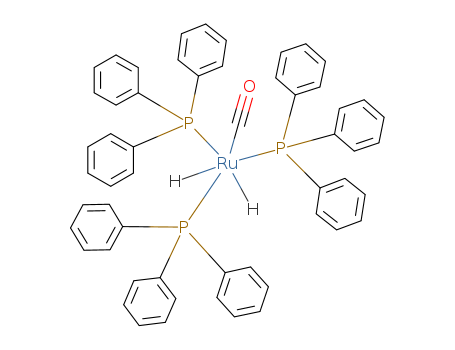10.1039/DT9880000415
The research focuses on the synthesis and characterization of ruthenium and osmium sulphonate complexes, with the aim of exploring the potential of sulphonate anions as leaving groups in platinum metal ligand-substitution reactions. The study successfully prepared a series of new sulphonate complexes, including [M(O,SR),(H,O)(CO)(PPh,),] (M = Ru or Os) and [M(O,SR),(CO),(PPh,),], through reactions involving sulphonic acids with precursors such as [MH,(CO)(PPh,),] in refluxing benzene or toluene. The synthesized complexes were characterized using variable-temperature 'H and 31P-{1H} n.m.r. spectroscopy, which revealed fluxional behavior in solution, and X-ray diffraction methods, which determined the solid-state structures. The findings suggest that the M-O,SR bonds trans to CO are less labile than those trans to PPh, in these complexes. The chemicals used in the process include sulphonic acids (RSO,H with R = CH,, CF,, or C,H,CH,-p), carbonyldihydridotris(triphenylphosphine)-ruthenium and -osmium, tricarbonylbis(triphenylphosphine)ruthenium, dicarbonyldihydridobis(triphenylphosphine)osmium, and tetrahydridotris(triphenylphosphine)osmium, among others.
10.1055/s-0036-1590985
The research explores the development of a new methodology for synthesizing polyaryl fluorenones through ruthenium-catalyzed C–O bond activation and arylation. The study focuses on the selective activation of methoxy and O-carbamoyl-substituted fluorenones, establishing reactions that yield various arylated fluorenones with high efficiency. Key chemicals involved include fluorenones, boronic esters, and ruthenium catalysts such as RuH2(CO)(PPh3)3. The researchers also employed palladium and nickel catalysts to achieve orthogonal reactivity, allowing for the synthesis of 1,4-diaryl and 1,4,8-triaryl fluorenones. The methodology leverages the convenience of starting materials and the potential for application in material science, particularly in the development of optical and electrochemical properties for organic light-emitting devices and liquid crystals.



 Xn
Xn


